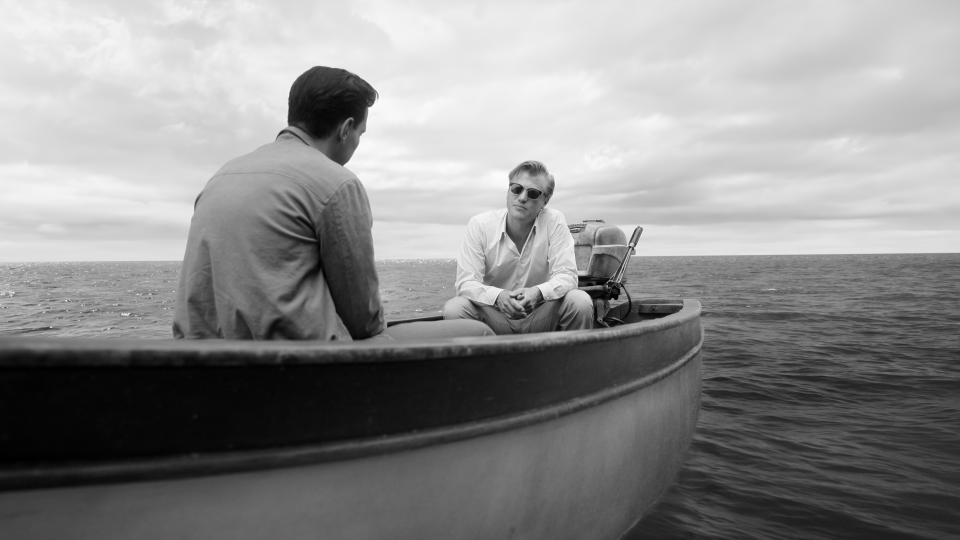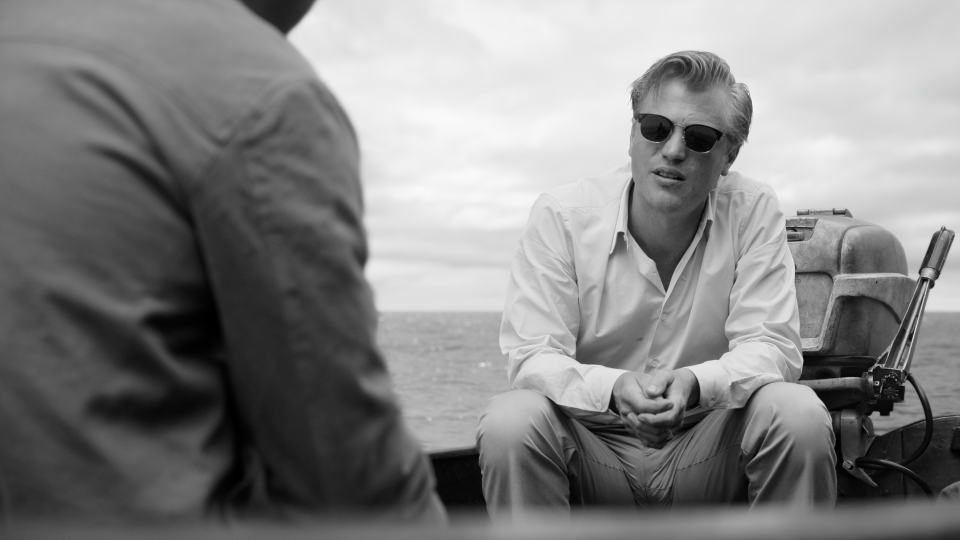For ‘Ripley,’ Murder Is Easy — but the Aftermath Is a Different Story

- Oops!Something went wrong.Please try again later.
[Editor’s note: Spoilers for “Ripley” below.]
The turning point for “Ripley,” Steven Zaillian’s limited Netflix series re-imagining of Patricia Highsmith’s crime novel, “The Talented Mr. Ripley,” occurs in Episode 3 (“Sommerso”), when grifter Tom Ripley (Andrew Scott) murders Dickie (Johnny Flynn) in a boat in Sanremo. But the grifter discovers that murder is a filthy business in a bravura 20-minute sequence, in which he has difficulty disposing of Dickie’s body, and we observe every arduous moment in close to real-time.
More from IndieWire
This protracted view of Tom’s twisted mind in action is made even more menacing in black-and-white (shot by “There Will Be Blood” Oscar winner Robert Elswit). After learning that his grift has come to a sudden end, Tom grabs the oar and beats Dickie to death. But then everything goes wrong.
“I had written down on a post-it when I first started writing that ‘It’s easy to kill somebody but it’s really hard to get rid of the body,'” Zaillian said at an early screening of the Netflix show in New York City. “I hoped it would be interesting if we could see just how hard it is and to show it basically in real-time. And what seems like such a simple little thing, which is taking this body and throw it overboard, becomes like this herculean struggle for Andrew. We had to do it over and over again. He had to keep everything in mind, it was physically demanding because he was doing it….That’s Andrew really trying to climb [back up the boat]. It went on for about 10 minutes…..And it was important that we see that he never thinks ahead. So everything he’s figuring out, we want to see him figure out.”
First, Tom has to set fire to the anchor rope to loosen it and then gets tripped by the rope and thrown overboard. It’s bad enough that he has a fear of drowning, but the boat spins in circles and strikes him until he manages to pull the fuel line from the motor. After that, Tom must methodically sink the boat with small boulders in a nearby cove.

For editor David Rogers (who split the eight episodes with editor Joshua Raymond Lee), the boat murder was a tour de force of claustrophobic suspense (with no need for scoring by composer Jeff Russo), and he establishes a quiet yet persistent rhythm throughout. Typical of the series’ minimalist style, both Scott and Flynn turn in restrained performances during the lead-up to the murder when Dickie tells Tom that it’s time for him to move on. Getting booted out of his Italian paradise compels Tom to pick up the oar and methodically strike Dickie. At one point, he asks Tom for help, but Tom ignores him and continues hitting him.
“That line was a pretty late addition,” Rogers told IndieWire. “Someone pointed out to me, who recently saw the show, that they appreciated Dickie’s reaction to being struck on the head by Tom because it’s so unexpected and shocking for him. He assumes Tom is a friend and he trusts him. So when he’s still reaching out a hand and asking for help, I thought that was particularly brilliant.”
Scott’s performance, though, did not deviate emotionally. What they added were some wide shots among the three camera angles of the boat to enhance what was almost exclusively a digital environment (including one of Tom swinging the oar to make him look smaller). Nearly the entire boat sequence was shot in an outdoor water tank in Italy surrounded by green screen with a lot of CG replacement by Wētā FX beside the two actors. “Steve talked to J.C. Chandor about shooting ‘All Is Lost’ on a real boat in the ocean,” Lee told IndieWire. “For that film, they tied boats to a dock and were shooting on open water. But the way this scene would look and the way the camera would be oriented, shooting in the tank seemed like the more practical solution.”
The editors also appreciated Tom’s protracted struggle in carrying out the murder, with many more obstacles to endure than even Highsmith described in her novel. This carried over throughout the series. “Something Steve actually often mentions is that this is the scene that people always tend to recall from the novel or the [Anthony] Minghella film [‘The Talented Mr. Ripley’],” Lee said. “But it’s very different in that, instead of moving quickly on from the murder, this approach is to telescope in on the immediate aftermath when you have to cover your tracks. That’s something Tom has no experience with because he’s not a seasoned killer. He’s someone who’s inadvertently found himself in this position. And so getting to spend time really close to him in his thoughts as he figures out what he’s going to do next, moving from one step to the next without a premeditated plan, is a unique departure. It was a given in the novel and [previous] film.”

“So we see his hands and what they’re doing in extreme closeup and duration, and we tried to make the boat a character in the way that it comes after him in an almost supernatural way,” added Rogers. “And how hard it was for him to climb back into the boat. That’s something that we worked really hard on with [Wētā FX] because there are full [digital] shots of the boat and the water and a CG double for Andrew, where we had to really design the framing and then position the boat in the frame and its movements.”
Scott did all of the heavy lifting himself for the aftermath disposal of the boat, shot on location at an Italian cove. The actor hauled around 50 boulders into the boat throughout an entire day and then scuttled the vessel. “The scuttling was a late change where we shortened that significantly,” Rogers said. “Andrew pushes that boat out full of rocks and then starts to use his weight to get water over the gunwale. And it’s really Andrew sinking the boat.”
Meanwhile, Lee found Rogers’ work on the murder sequence a helpful guide for cutting Tom’s impulsively desperate second murder in Episode 5 (“Lucio”). It’s a wild and lengthy misadventure in Rome, where Tom is thrown into a panic trying to dispose of the body up and down eight flights of stairs in an apartment, out onto the street, and into the victim’s car to drop off at a desolate place. After he takes a taxi back to the apartment, he suddenly realizes that he isn’t done covering his tracks yet, so he heads back to the car.
“Tom is an opportunist, he’s a grifter, and I think he survives only on his ability to think,” Lee said. “And this is another exploration of just the immediate aftermath of a killing in almost real-time. It’s a consistent treatment between these two murders, this process of: You’ve killed someone, now what? So we thought a lot about this, wanting experientially to put the audience in the mindset of Tom and follow his thoughts because these two large passages of the series — they probably total almost an hour — are virtually silent films.”
Proma Khosla contributed to this article.
“Ripley” currently streams on Netflix.
Best of IndieWire
The 12 Best Thrillers Streaming on Netflix in April, from 'Fair Play' to 'Emily the Criminal'
Quentin Tarantino's Favorite Movies: 61 Films the Director Wants You to See
Sign up for Indiewire's Newsletter. For the latest news, follow us on Facebook, Twitter, and Instagram.

